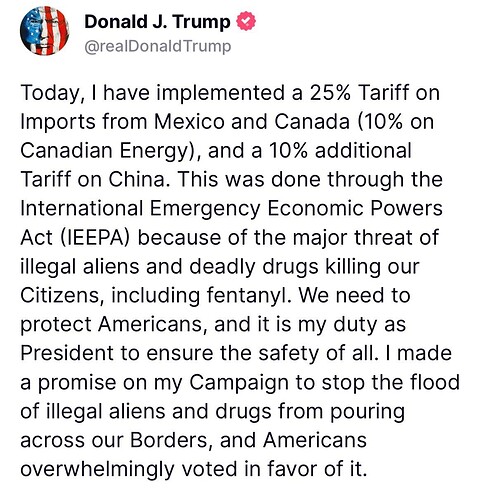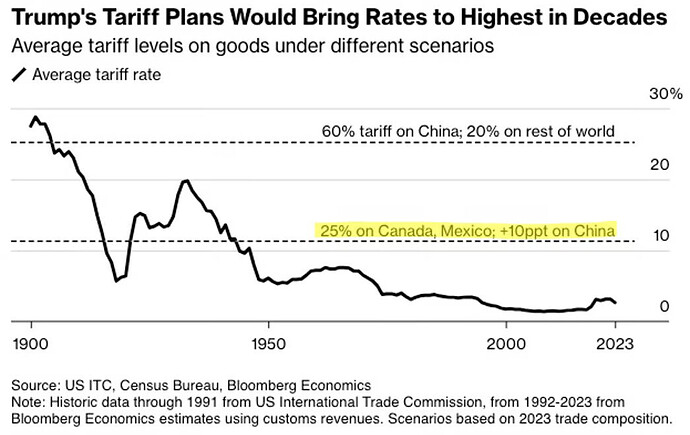President Trump has officially signed an executive order imposing tariifs on Canada, Mexico, and China effective Tuesday,
The U.S. will impose a 25% levy on imports from Canada and Mexico, a 10% tariff on energy products from Canada, and an additional 10% tariff on China.
- The White House is using the International Economic Emergency Powers Act (IEEPA) to impose tariffs, citing the fentanyl crisis and illegal immigration.
- Tariffs will remain until the trade partners eliminate fentanyl trafficking and reduce illegal immigration. No precise “metric” except that Americans stop dying from fentanyl and there is a “dramatic” drop in border crossings.
- No immediate exemptions and there is a retaliation clause that increases U.S. penalties if Canada, Mexico, or China impose counter-tariffs.
- Cover over $1.3 trillion worth of goods (based on 2023 import figures), more than double the value of Trump’s first-term China tariffs
- Canada and Mexico each have signaled they would counter with retaliatory tariffs.
- Trump indicated additional sector-based tariffs could follow on computer chips, pharmaceuticals, steel, aluminum, copper, oil, and gas, and possibly higher duties on the European Union.
- Trade experts note that relying on IEEPA for tariffs is unprecedented and could face legal challenges, though courts often defer to presidential authority in national-security or emergency contexts.

